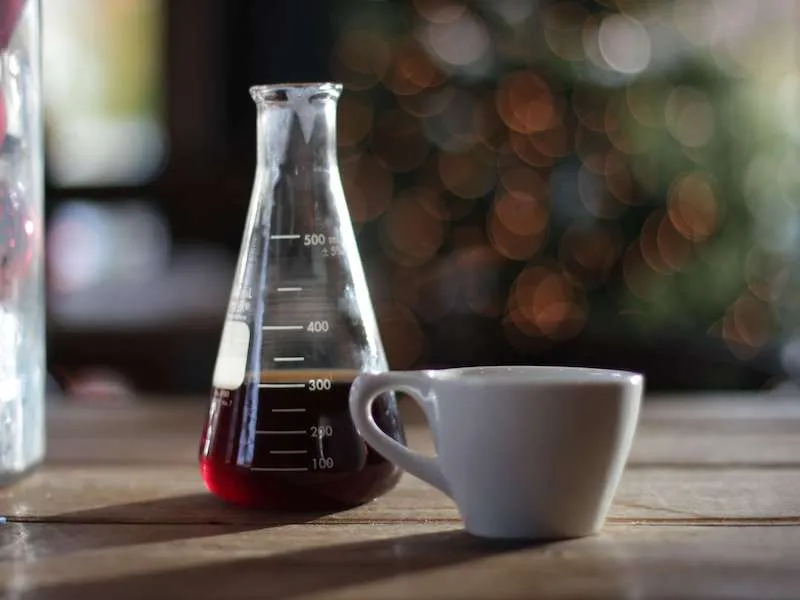The science of coffee

I enjoy a cup of hot coffee to start my day, so I was intrigued to read about the science behind this morning ritual beverage (https://www.science.org.au/curious/people-medicine/brew-some-coffee-chemistry).
The processes involved in making coffee all play an important role, affecting the chemical composition and therefore the taste. The fruit, known as coffee cherries, are harvested from the coffea plant. Drying or fermentation is used to remove the flesh of the cherry, leaving just the seed, which we call a coffee bean. The seed is green at this point and needs to be roasted. The roasting catalyses important chemical reactions and creates caramelisation, which are the key to creating the flavour profile. Grinding exposes the inside of the seed to air, causing further chemical reactions.
The chemical composition and taste of coffee can vary from cup to cup. Here are 4 key components that can greatly affect taste.
Alkaloids are stimulants of the central nervous system. Caffeine makes up 0.6 to 4 per cent of the coffee bean. It adds bitterness, strength, and body to your cup of coffee. Found in lower concentrations than caffeine is another alkaloid, trigonelline. At 160 °C trigonelline begins to decompose, so during roasting (which occurs up to 200 °C) more than half the trigonelline is lost. This process creates aromatic compounds, producing earthy, sweet and caramel aromas.
Volatile compounds are organic compounds that evaporate at room temperature. Chemical reactions during roasting often create volatile compounds, but storage may also have an impact. Many of coffee’s aromas are due to these compounds. Each cup of coffee contains more than 100 volatile compounds, each of which has its own aroma. Scientists are working to determine what aromas they are responsible for, but due to their volatile nature this is a difficult task. Aromas range from nutty, to smoky, to citrus.
Acids such as citric, malic and chlorogenic are essential to the flavour profile as their tartness balances the bitterness and sweetness of other components. Green beans are much more acidic than roasted beans. The acids break down and produce compounds such as melanoidins, which are bitter and brown in colour. A darker roast generally means a more bitter coffee.
Lipids (or coffee oil) are a prominent part of the green coffee bean. Roasting moves the lipids from within the bean to the surface. The lipids are responsible for the crema, the creamy layer at the top of an espresso (made by forcing hot pressurised water through coffee grounds). The coffee oils also contain volatile compounds. Lipids are essential to creating the texture and mouth feel of a cup of coffee.
A great deal of science goes into crafting a distinctive mix of aromas, flavours, and textures. From plant to cup, every step of the process affects the quality of your morning pick me up.
Author:
Olivia Jaconelli
Date Posted:
January 27, 2021
